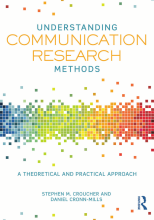Research Methods - Content Analysis - Analyzing and Reporting Data in a Quantitative CA
16 important questions on Research Methods - Content Analysis - Analyzing and Reporting Data in a Quantitative CA
What distinguishes qualitative from quantitative CA?
- Coding frame and coding process may adapt during analysis, thus is more flexible than the quantitative CA
- The coding frame is considered part of the analysis, while in a quantitative CA coding is only seen as data collection. The analysis occurs later through rigorous statistical analysis
- Focuses on explicit and latent content (= not stated directly in data, but inferred from overall content and context of data)
By which 3 characteristics can you identify a qualitative CA?
2. The process is systematic for placing data into the coding frame.
3. The process remains flexible to provide the best insights of your data.
What does the conventional approach to a qualitative CA mean?
- Higher grades + faster learning
- Never study anything twice
- 100% sure, 100% understanding
What are the disadvantages of a conventional approach to a qualitative CA?
2. Frequently confused with grounded theory approach to qualitative analysis.
What does a directive qualitative CA entail?
What is the main limitation of a directive qualitative CA?
What does the third qualitative CA approach summative entail?
What is the disadvantage of summative qualitative CA?
What does the first way of developing codes in qualitative CA (open coding) entail?
What does the second way of developing codes in qualitative CA (theoretical coding) entail?
What does the second way of developing codes in qualitative CA (theoretical coding) entail?
What does the third way of developing codes in qualitative CA (open coding) entail?
What does the third way of developing codes in qualitative CA (open coding) entail?
What is a good way to start with the coding frame?
What are the 7 main steps for conducting a qualitative CA?
2. Collect your qualitative data using 1 or more methods (interviews, focus groups)
3. Prepare your data for analysis (qualitative data is easier to analyze if tangible, such as a transcript)
4. Start the coding process. Depending on your approach (conventional, directive, summative) use the appropriate coding technique (open, theoretical, axial)
5. Develop coding framework
6. Identify categories and themes emerging from coding of your data
7. Interpretation: review your codes, categories and themes. What is the data telling you about the communication phenomenon you're studying? Connect your interpretation with your research question.
From which research paradigms can you conduct a CA?
The question on the page originate from the summary of the following study material:
- A unique study and practice tool
- Never study anything twice again
- Get the grades you hope for
- 100% sure, 100% understanding































